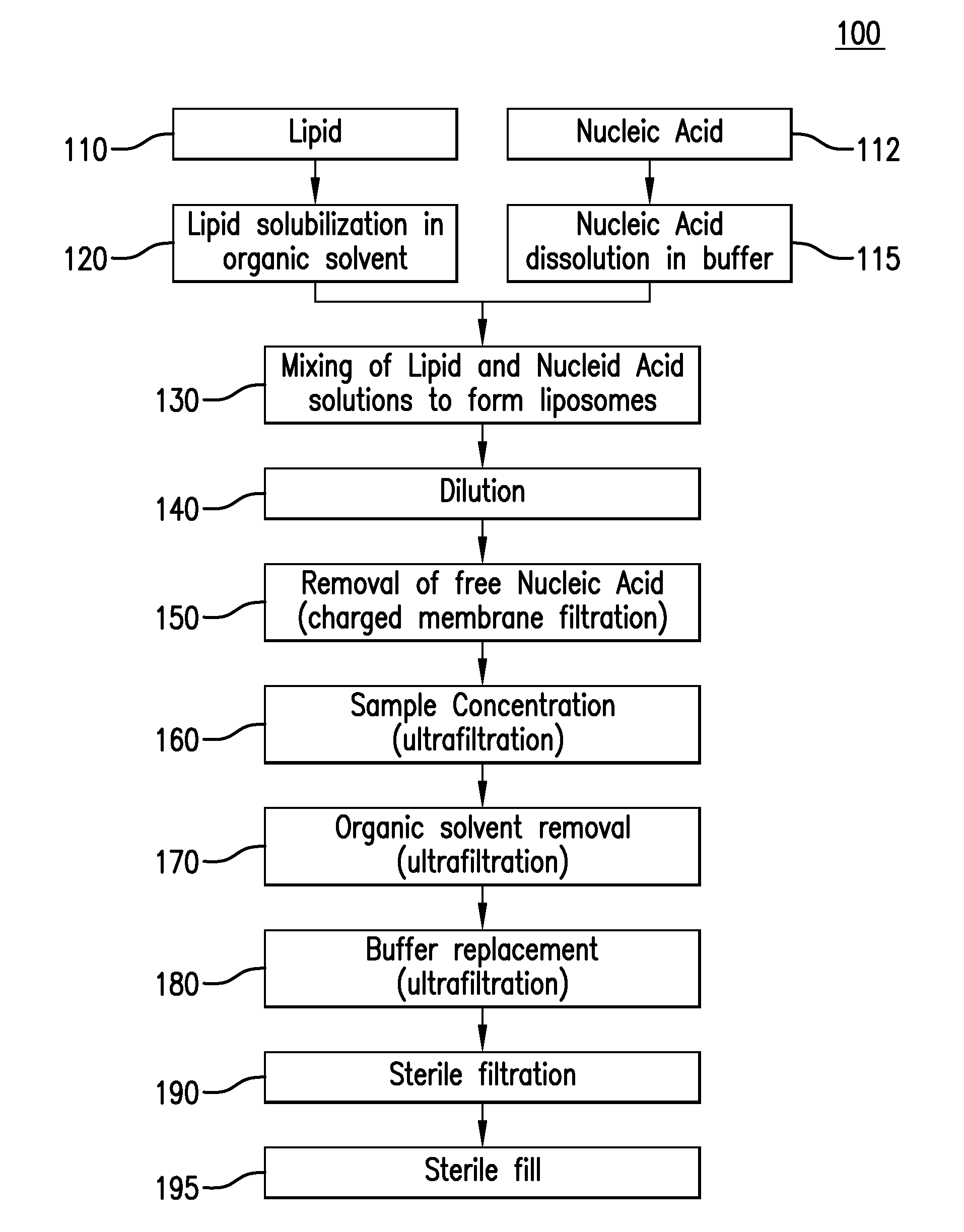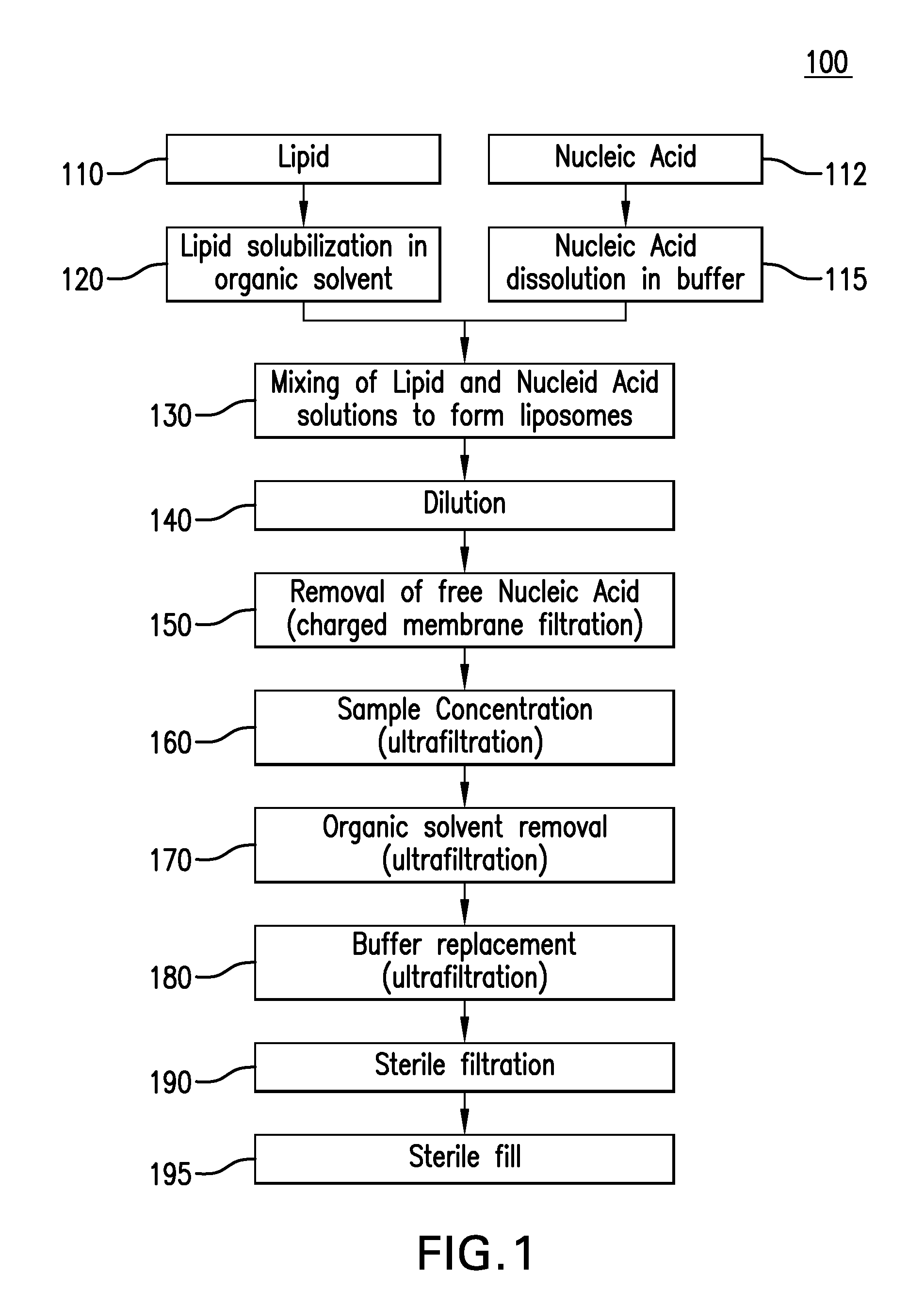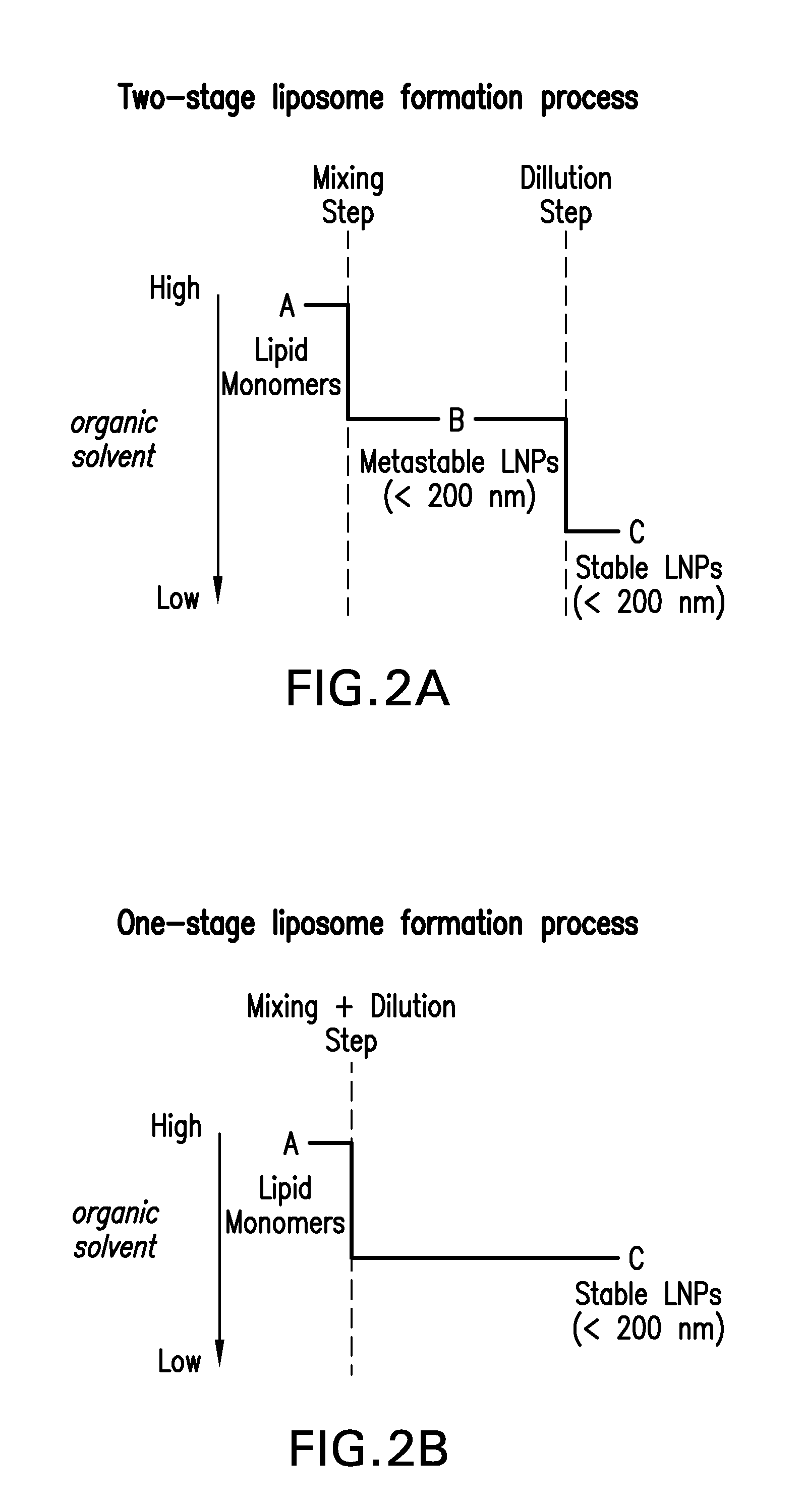Preparation of Lipid Nanoparticles
a technology of lipid nanoparticles and lipid nanoparticles, which is applied in the field of preparation of lipid nanoparticles, can solve the problems of short half-life in the bloodstream, inability to easily scale up the mass production of large volumes of liposomes, and dephospholipid raw materials and encapsulated drugs
- Summary
- Abstract
- Description
- Claims
- Application Information
AI Technical Summary
Benefits of technology
Problems solved by technology
Method used
Image
Examples
example 1
[0104]This Example illustrates the use of one process of the present invention to make Lipid Nanoparticles (LNPs) which encapsulate siRNA as therapeutic product. The Example also illustrates the variation of a process parameter (e.g., inlet flow rates) according to one embodiment of the present invention.
Oligonucleotide Synthesis
[0105]Oligonucleotide synthesis is well known in the art. (See US patent applications: US 2006 / 0083780, US 2006 / 0240554, US 2008 / 0020058, US 2009 / 0263407 and US 2009 / 0285881 and PCT patent applications: WO 2009 / 086558, WO2009 / 127060, WO2009 / 132131, WO2010 / 042877, WO2010 / 054384, WO2010 / 054401, WO2010 / 054405 and WO2010 / 054406). The siRNAs disclosed and utilized in the Examples were synthesized via standard solid phase procedures.
[0106]In one embodiment, LNPs were prepared as follows, siRNA to luciferase (See Abrams et al. Mol. Therapy (2010) 18(1):171-180; Tao et al. Mol. Therapy (2010) 18(9):1657-1666; and Morrisey et al. Nat. Biotechnology (2005) 23:1002-100...
example 2
[0109]This Example illustrates the use of one process of the present invention to make Lipid Nanoparticles (LNPs) which encapsulate siRNA as therapeutic product. The Example also illustrates the variation of a process parameter (e.g., ethanol concentration) according to one embodiment of the present invention.
[0110]In one embodiment, LNPs were prepared as follows. siRNA to luciferase was dissolved in citrate buffer (25 mM, 100 mM NaCl, pH 3.8) at 47 μM. Lipids (CLinDMA, PEG-DMG) and cholesterol were solubilized in ethanol at a relative molar ratio of 60:38:2 (CLinDMA:Cholesterol:PEG-DMG) and a total lipid concentration of 6.7 mg / mL. The organic solution was mixed with buffer solution using either a two-stream MIVM or a four-stream MIVM. The solvent concentration (e.g., ethanol:buffer volumetric ratio) was changed by changing the feed flow rates to the MIVM. Using the two-stream MIVM, the flow rate of ethanol solution was varied between 22 mL / min and 11.8 mL / min while keeping the buf...
example 3
[0114]This Example illustrates the use of non-alcohol organic solvents to generate LNPs according to one embodiment of the present invention.
[0115]In one embodiment, LNPs were prepared as follows. siRNA to luciferase was dissolved in citrate buffer (25 mM, 100 mM NaCl, pH 3.8) at 47 μM. Lipids (CLinDMA, PEG-DMG) and cholesterol were solubilized in tetrahydrofuran (THF) at a relative molar ratio of 60:38:2 (CLinDMA:Cholesterol:PEG-DMG) and a total lipid concentration of 6.7 mg / mL. To generate LNPs, the organic lipid solution was mixed with buffer solution using a four-stream MIVM. To obtain THF concentrations in the range of about 13% v / v to 25% v / v after mixing, two additional citrate buffer (25 mM, 100 mM NaCl, pH 3.8) solutions were used as diluent. The flow rates of organic lipid solution and siRNA-containing buffer solutions to the MIVM were varied between 22 mL / min and 30 mL / min, while the flow rate of each of the two citrate diluent streams was ranged between 44 mL / min and 120...
PUM
| Property | Measurement | Unit |
|---|---|---|
| Fraction | aaaaa | aaaaa |
| Fraction | aaaaa | aaaaa |
| Fraction | aaaaa | aaaaa |
Abstract
Description
Claims
Application Information
 Login to View More
Login to View More - R&D
- Intellectual Property
- Life Sciences
- Materials
- Tech Scout
- Unparalleled Data Quality
- Higher Quality Content
- 60% Fewer Hallucinations
Browse by: Latest US Patents, China's latest patents, Technical Efficacy Thesaurus, Application Domain, Technology Topic, Popular Technical Reports.
© 2025 PatSnap. All rights reserved.Legal|Privacy policy|Modern Slavery Act Transparency Statement|Sitemap|About US| Contact US: help@patsnap.com



